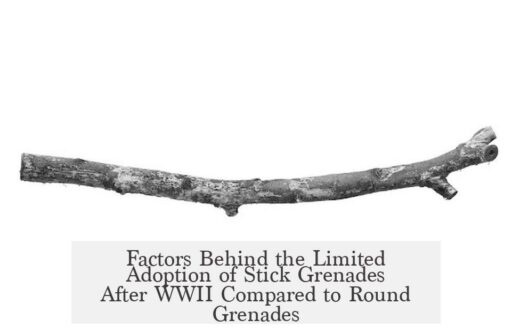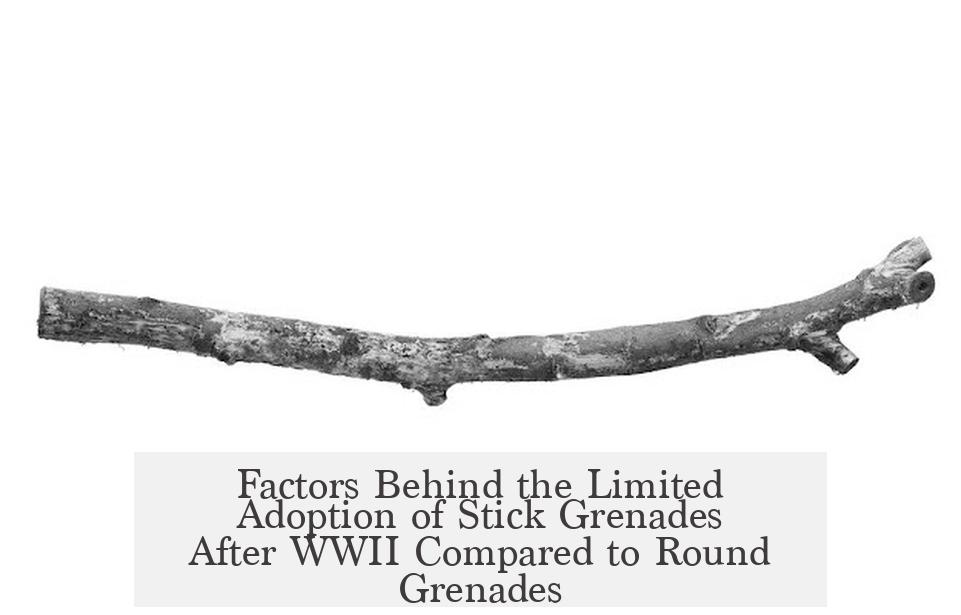Stick grenades barely caught on after World War II due to their bulk, weight, cost, and limited carrying capacity compared to regular round grenades, despite their somewhat greater throwing distance. Soldiers generally preferred carrying multiple standard grenades over fewer stick grenades, valuing firepower and practicality over range.
The primary reason for the decline of stick grenades lies in their design drawbacks. Their long handles, while helpful for throwing farther, made them much bulkier and heavier than round grenades. This bulkiness affected how many grenades a soldier could carry efficiently. For example, a soldier could carry two or three round grenades in the space used by a single stick grenade. This clear difference made the choice obvious for soldiers who needed more firepower for the same amount of carrying space.
Cost also influenced this trend. Stick grenades typically cost more to produce than simpler round grenades such as the British Mills bomb or the American “pineapple” grenade. Cheaper grenades allowed armies to equip soldiers with more explosive devices at a lower cost, improving overall combat effectiveness.
Transport was another issue. The handle made stick grenades awkward to store and transport in bulk. Round grenades, with their compact shapes, fit easily into pouches and packs. The stick grenade’s shape made logistics and carry less efficient.
Fuse mechanisms further contributed to the preference shift. Stick grenades mostly used friction-type fuses, requiring the user to pull a string to ignite the fuse—like striking a match. This design was less straightforward than the percussion fuse improvements developed by the end of World War II. The standard modern round grenade fuse usually involves a pull-pin and lever mechanism, which is easier and quicker to use under combat stress.
Beyond simple anti-personnel use, stick grenades found specialized roles. While antipersonnel stick grenades declined in popularity, some anti-armor grenades such as the Soviet RKG-3 retained the stick form. These employed shaped charges and complex impact fuses embedded in their handles. The stick design helped orient the grenade correctly on impact, which was critical for penetrating armor. Despite this niche, the stick shape remained largely out of favor for general infantry use.
Stick grenades saw continued use in some countries after World War II. China produced grenades modeled on the Japanese Type 98 stick grenade through the 1960s. The North Vietnamese also used stick grenades with friction fuses during the Vietnam War. Still, these examples are exceptions rather than the rule, reflecting specific tactical or manufacturing preferences rather than widespread adoption.
| Factor | Stick Grenades | Round Grenades |
|---|---|---|
| Shape and Size | Bulky with handle, harder to carry | Compact, easily stored |
| Carrying Capacity | Fewer grenades fit in same space | More grenades can be carried |
| Cost | Higher production cost | Cheaper and mass-produced |
| Fuse Type | Friction pull-string | Improved percussion pull-pin |
| Throwing Distance | Longer range due to handle | Shorter, but acceptable range |
| Operational Preference | Less favored for firepower reasons | More favored by troops |
| Special Uses | Anti-armor niche (RKG-3) | Primarily anti-personnel |
Some suggest American-style grenades were round partly because soldiers could throw them like baseballs, a natural and effective throwing style. This parallels one of the key advantages of stick grenades: their handle allows longer throws. However, soldiers in general preferred having more grenades available rather than slightly longer throwing distances.
In summary, stick grenades lost favor after World War II because their design did not meet the evolving needs of infantry soldiers. Their weight, size, cost, and older fuse mechanisms were disadvantages compared to more compact, cost-effective round grenades that allowed carrying multiple units. Although stick grenades persist in specific anti-armor roles, modern combat favors round grenades for general use due to their practicality and improved operability.
- Stick grenades are bulkier and heavier, reducing carrying capacity.
- They cost more to produce than equivalent round grenades.
- Friction-type fuses are less practical than modern percussion fuses.
- Longer throwing distance does not outweigh the benefit of carrying more grenades.
- Stick grenades remain in use primarily for anti-armor roles requiring precise orientation.



